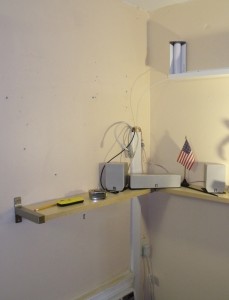 Since we last spoke of our Home Theater Frontend, it has gone through some changes. You can click here to see the pictures from the previous iteration.
Since we last spoke of our Home Theater Frontend, it has gone through some changes. You can click here to see the pictures from the previous iteration.
After writing that, we started thinking about our lack of HDMI support, and started preparing for our glorious HDMI filed future. HDMI is the standard which is, and will be used going forward for digital video content, and carries both audio and video in a single cable. So, we wired up an HDMI cable with two DVI adapters to replace our existing DVI cable.
But that wasn’t enough, so we hopped on a Newegg deal for a video card that output to HDMI…one adapter down. Then, even though we hadn’t planned on it so soon, we upgraded the computer monitor we were using to a 32″ Westinghouse HDTV. It had an SPDIF line out, so the audio signal can return to the older receiver. It is amazing how one little decision…to prepare for a future upgrade can induce you to invest earlier.
Why 32″ and not 42-47″ or beyond? Well, size considerations for the room. Here’s a picture from when we emptied the area to work on it. You can see the preparations mounting the new TV waiting there. High above is the room wi-fi antenna.
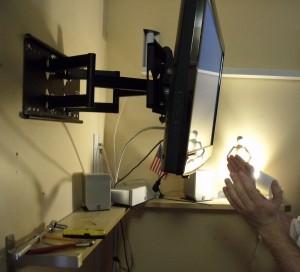 Here is the new mount and HDTV. It can extend a foot and a half from the wall, and tilt to a variety of different angles. And the mount is rated for roughly four times the weight of the television. HDTVs have been getting lighter. Either way, that mount is bolted into two studs, something we wanted. If it comes down, which it isn’t, it’s taking the wall with it.
Here is the new mount and HDTV. It can extend a foot and a half from the wall, and tilt to a variety of different angles. And the mount is rated for roughly four times the weight of the television. HDTVs have been getting lighter. Either way, that mount is bolted into two studs, something we wanted. If it comes down, which it isn’t, it’s taking the wall with it.

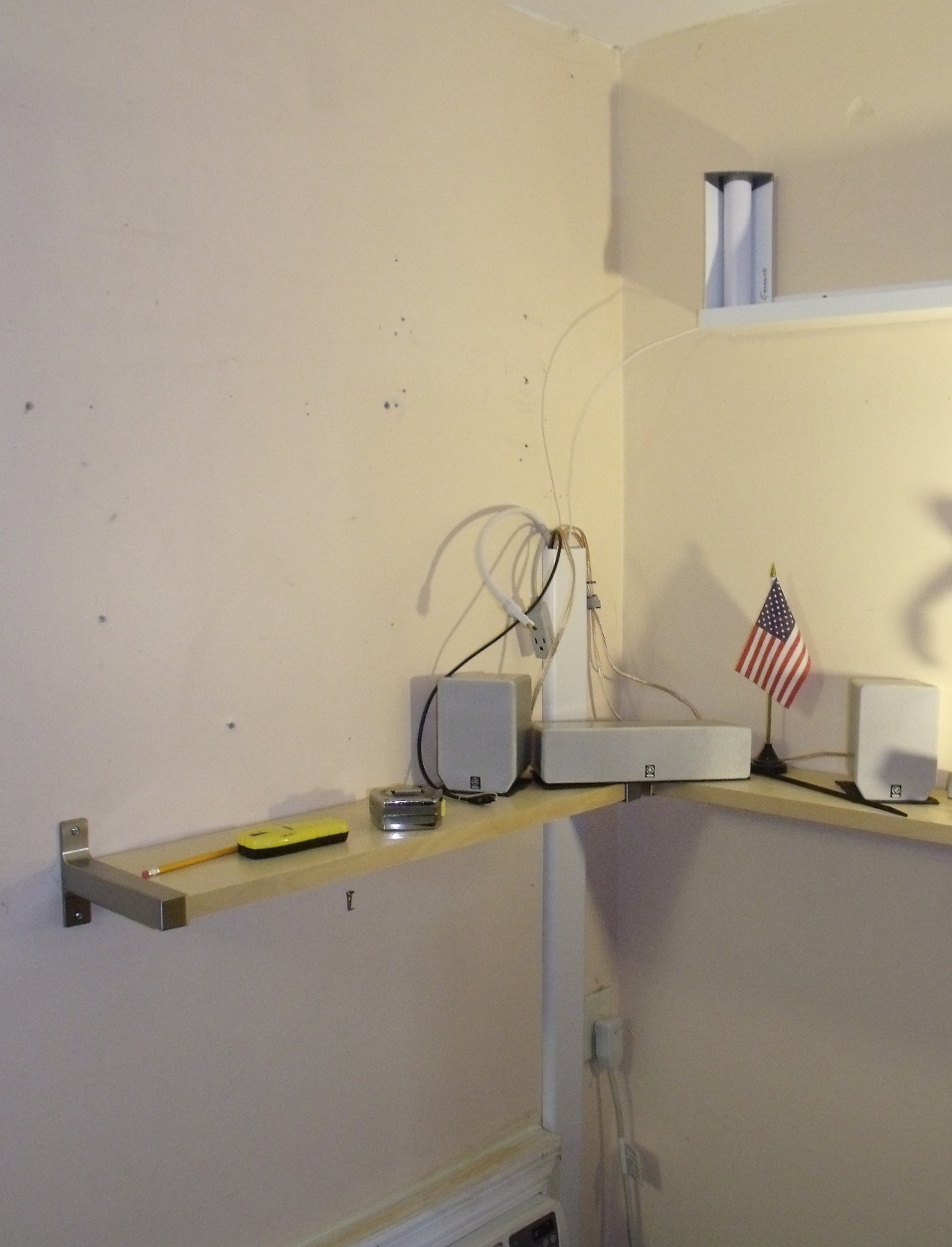
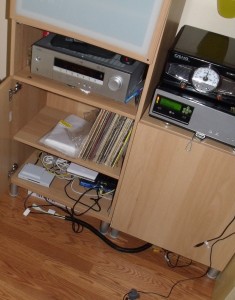
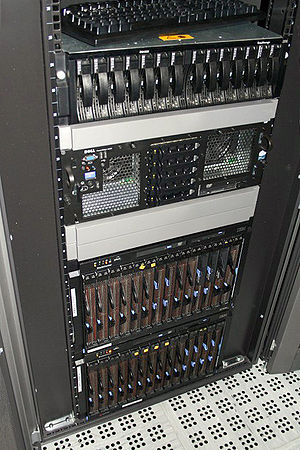


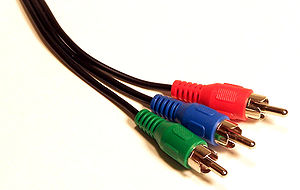

![Reblog this post [with Zemanta]](http://img.zemanta.com/reblog_c.png?x-id=e5cb12b6-0e95-4cc5-a433-0c05b92bccbf)